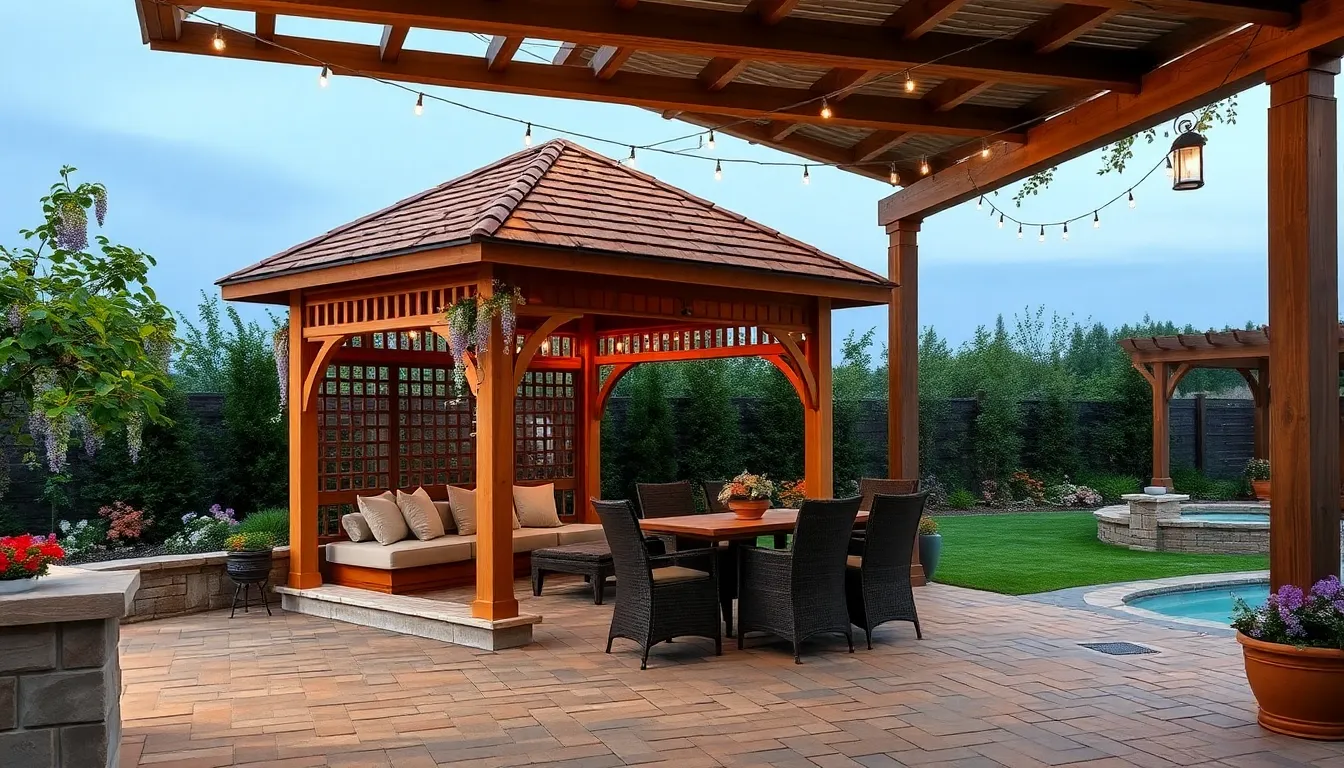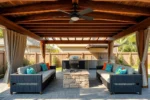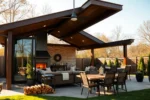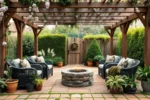Transforming your backyard into a welcoming retreat starts with thoughtful outdoor structures that blend style and function. Whether you’re new to outdoor design or looking to elevate your space, combining pergolas and gazebos offers versatile solutions that enhance comfort and aesthetic appeal.
In this article, you’ll discover 13 inspiring pergola and gazebo combinations tailored to fit various tastes and needs. From cozy corners to grand entertaining areas, these ideas provide practical tips and creative touches to help you craft an outdoor living space you’ll love year-round.
Introduction to Pergola and Gazebo Combos
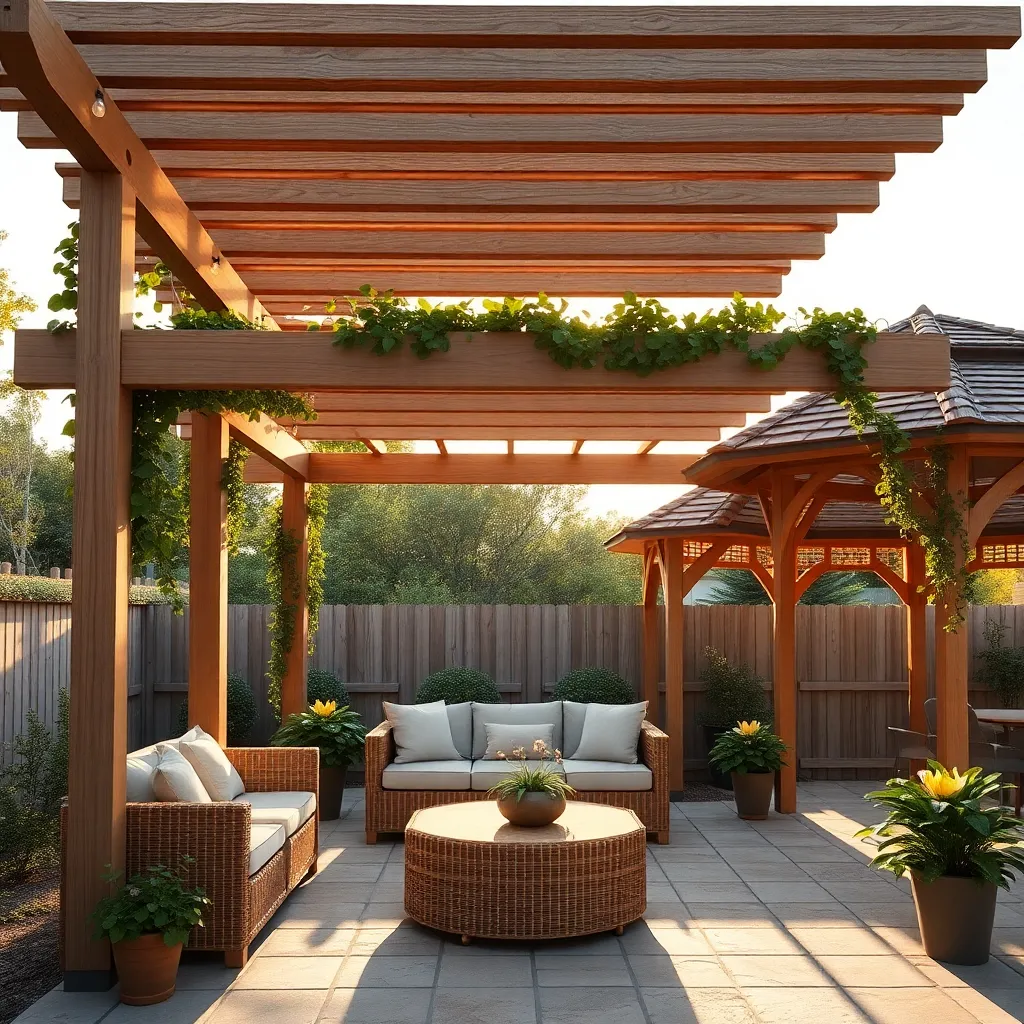
Combining a pergola and gazebo creates a versatile outdoor shelter that offers both shade and open-air charm. For a sturdy structure, use weather-resistant materials like cedar or aluminum, and consider a modular design where the gazebo serves as the central covered area, with pergolas extending outward to define the space. Aim for dimensions that accommodate your furniture comfortably—typically, a gazebo around 10×10 feet paired with pergola extensions of 6-8 feet works well for most backyards.
When constructing your combo, focus on integrating design elements that balance aesthetics and functionality. Incorporate adjustable louvered roofs on the pergola to control sunlight and add retractable screens or curtains to the gazebo for privacy and weather protection. For advanced customization, install built-in seating or planters along the pergola edges to create a seamless transition between the two structures and enhance your outdoor living experience.
Benefits of Combining Pergolas and Gazebos
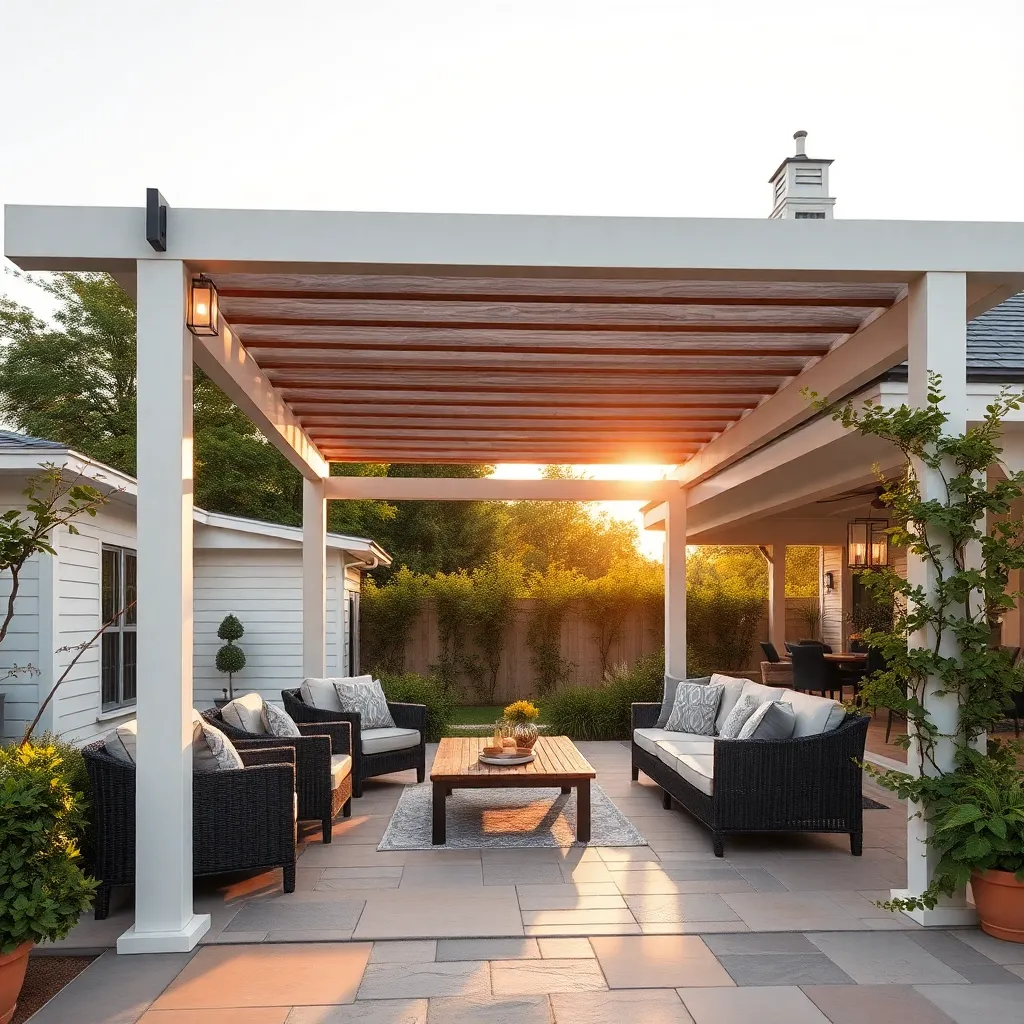
Combining pergolas and gazebos offers versatile outdoor living spaces that maximize comfort and style. For practical design, place the gazebo as a sheltered focal point with a solid roof for weather protection, and attach a pergola nearby to provide partial shade with climbing plants or retractable canopies. Use durable materials like cedar or aluminum for longevity, and consider dimensions around 10×10 feet for the gazebo and 8×12 feet for the pergola to create balanced, functional zones.
To enhance usability, integrate lighting and seating elements that complement both structures, such as string lights on the pergola beams and built-in benches inside the gazebo. Advanced tips include adding adjustable louvers to the pergola for better sun control and selecting weather-resistant fabrics for curtains or shades to increase privacy and comfort. This combination not only elevates curb appeal but also creates distinct areas for dining, relaxing, and entertaining outdoors.
Design Styles for Pergola-Gazebo Hybrids
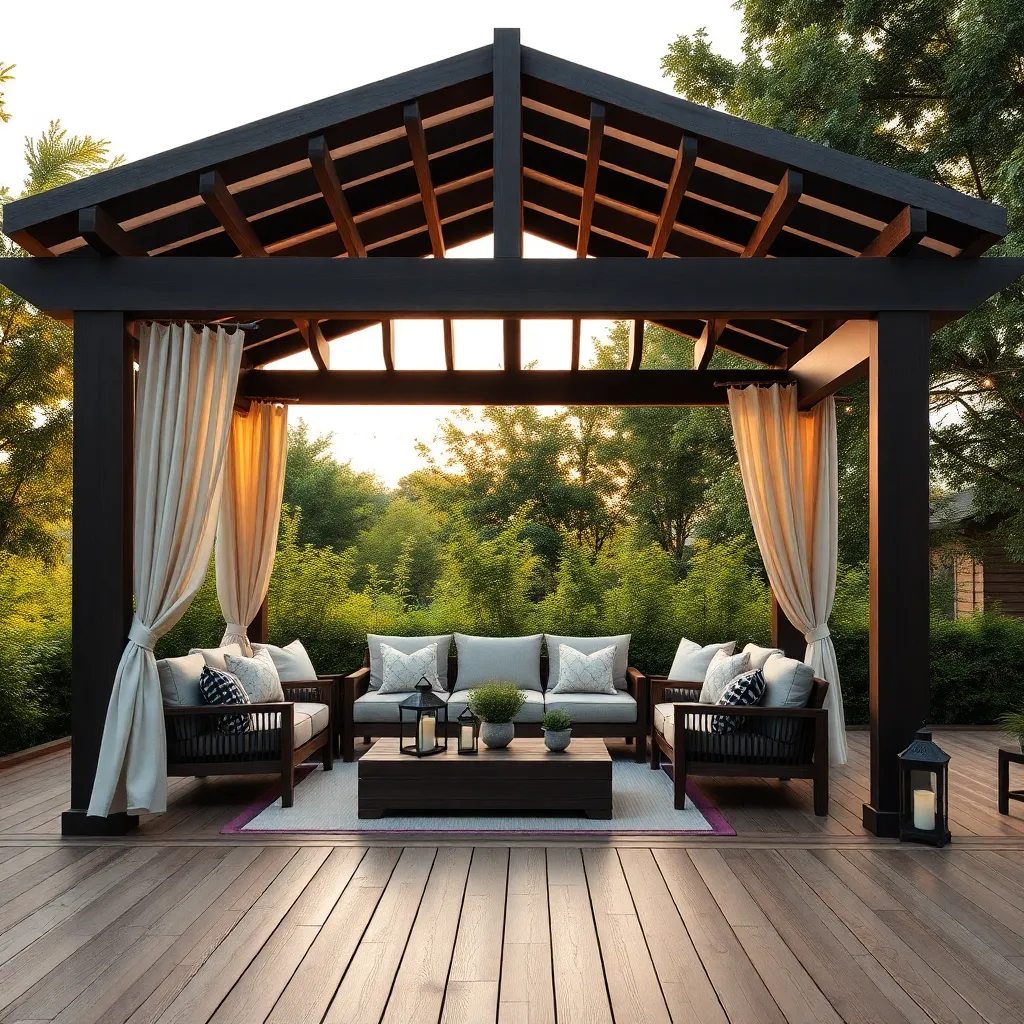
When designing a pergola-gazebo hybrid, consider combining sturdy materials like cedar or pressure-treated wood with metal accents to ensure durability and style. Start with a solid frame featuring the open slats of a pergola on one side for natural light, paired with a fully covered gazebo roof on the other to provide shelter from rain and sun. For beginners, aim for a structure about 10×12 feet to balance space and ease of construction, while advanced gardeners can incorporate retractable canopies or adjustable louvers for added flexibility.
To enhance both function and aesthetics, integrate built-in seating or planter boxes along the perimeter to maximize usability and greenery. Use weather-resistant finishes and consider adding climbing plants like wisteria or grapevines to soften the hard lines and create natural shade. For a polished look, ensure the roofline transitions smoothly between the open pergola section and the enclosed gazebo, using consistent color schemes and matching hardware for a cohesive outdoor retreat.
Choosing Materials for Durability and Style
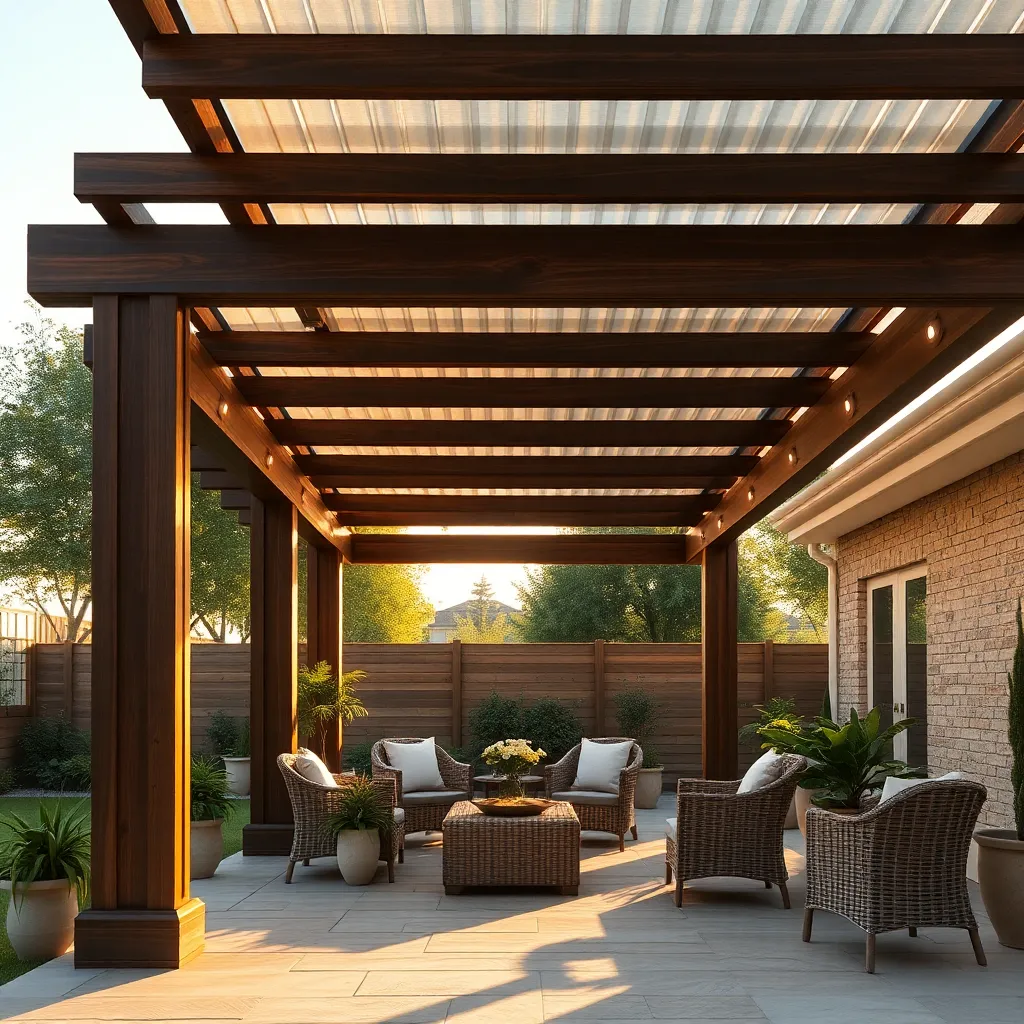
When selecting materials for a pergola-gazebo combination, prioritize durability and low maintenance. Popular choices include pressure-treated wood for a classic look, aluminum for rust resistance, or vinyl for easy upkeep. For wooden structures, opt for hardwoods like cedar or redwood, which naturally resist decay and insects, ensuring your shelter lasts for years.
To enhance both style and strength, consider combining materials strategically. For example, a metal frame with wooden slats can provide a modern aesthetic while improving structural integrity. Additionally, use weatherproof finishes or sealants to protect surfaces, and plan for proper drainage and ventilation to extend your pergola-gazebo’s lifespan.
Incorporating Lighting in Outdoor Structures
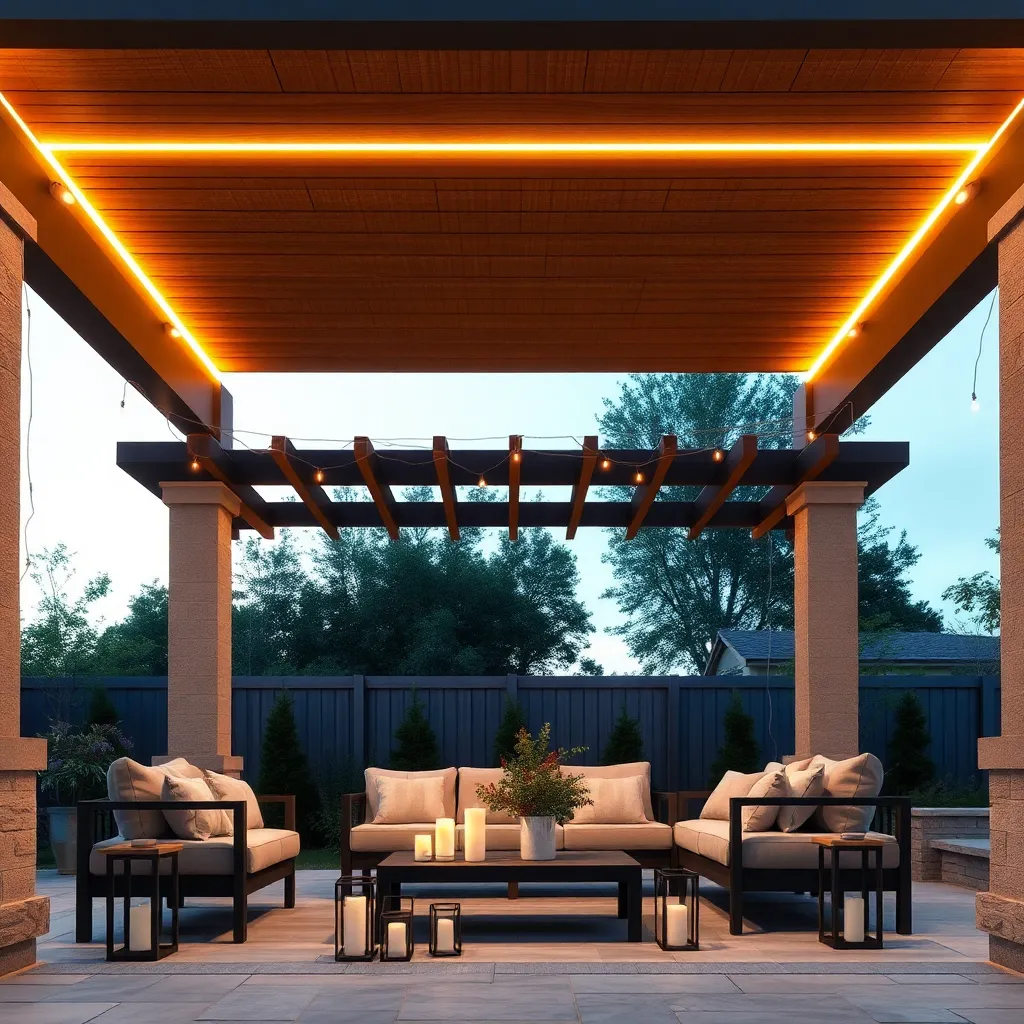
Incorporating lighting into pergolas and gazebos enhances both ambiance and functionality, allowing you to enjoy your outdoor space well after sunset. For a simple yet effective setup, consider weatherproof LED string lights or integrated recessed lighting along the beams, which provide warm, even illumination without overwhelming the structure. To ensure safety and durability, use outdoor-rated wiring and fixtures designed to withstand moisture and temperature changes.
For homeowners seeking a more advanced approach, installing dimmable overhead LED panels or solar-powered lanterns can create customizable mood lighting that adapts to different occasions. Additionally, integrating smart lighting controls allows you to adjust brightness and color remotely, adding convenience and energy efficiency. Remember to plan your electrical layout during construction or retrofit with professional help to maintain both aesthetics and safety.
Maximizing Shade and Ventilation Options
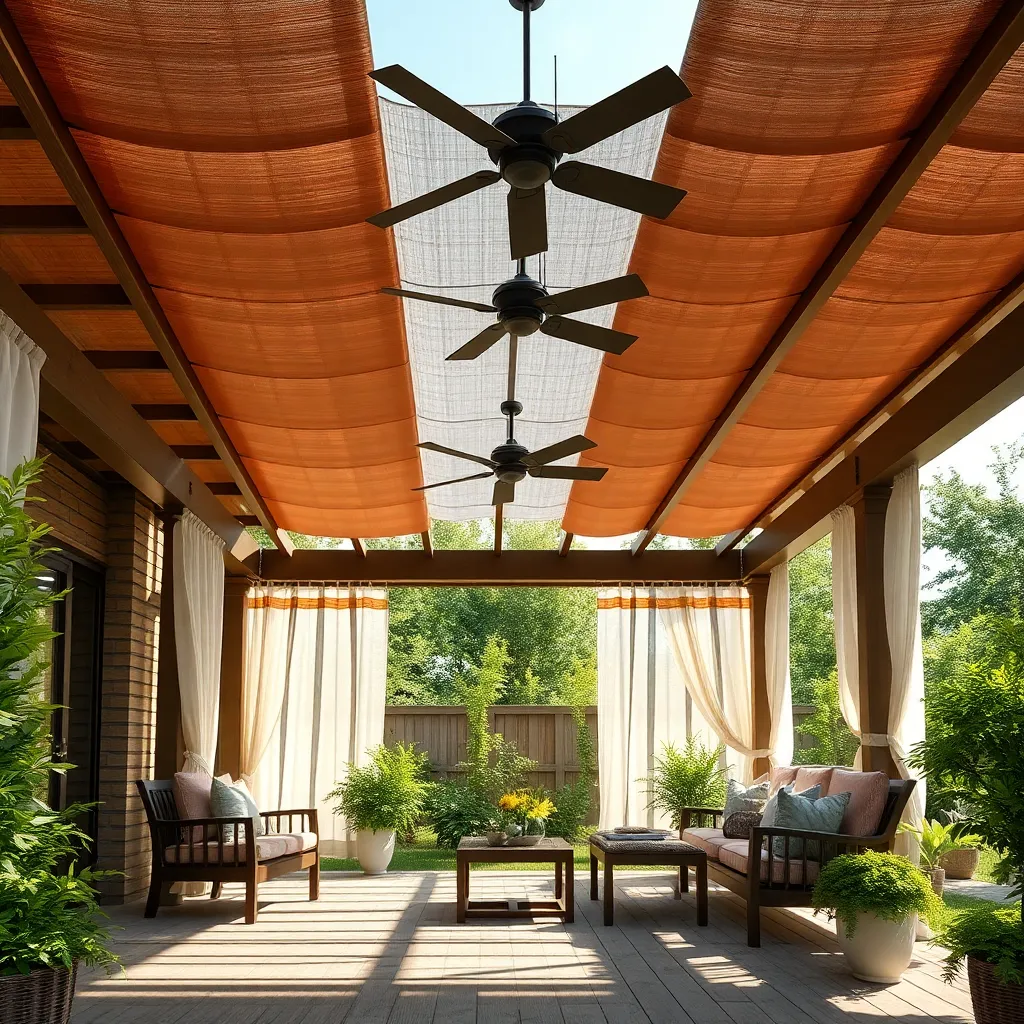
To maximize shade in pergola and gazebo combinations, consider using adjustable features like retractable fabric canopies or louvered roofs. These allow you to control sunlight exposure throughout the day, providing flexibility for different weather conditions. For durable and low-maintenance options, opt for weather-resistant materials such as aluminum or treated wood combined with UV-protected fabrics to ensure long-lasting shade.
Enhancing ventilation is key to comfort, especially in warmer climates. Incorporate open slat designs or strategically placed vents in the roof structure to promote airflow without sacrificing shade. For an advanced touch, adding ceiling fans or side panels with adjustable screens can improve air circulation and keep the space cool while protecting against insects and debris.
Integrating Seating and Dining Areas
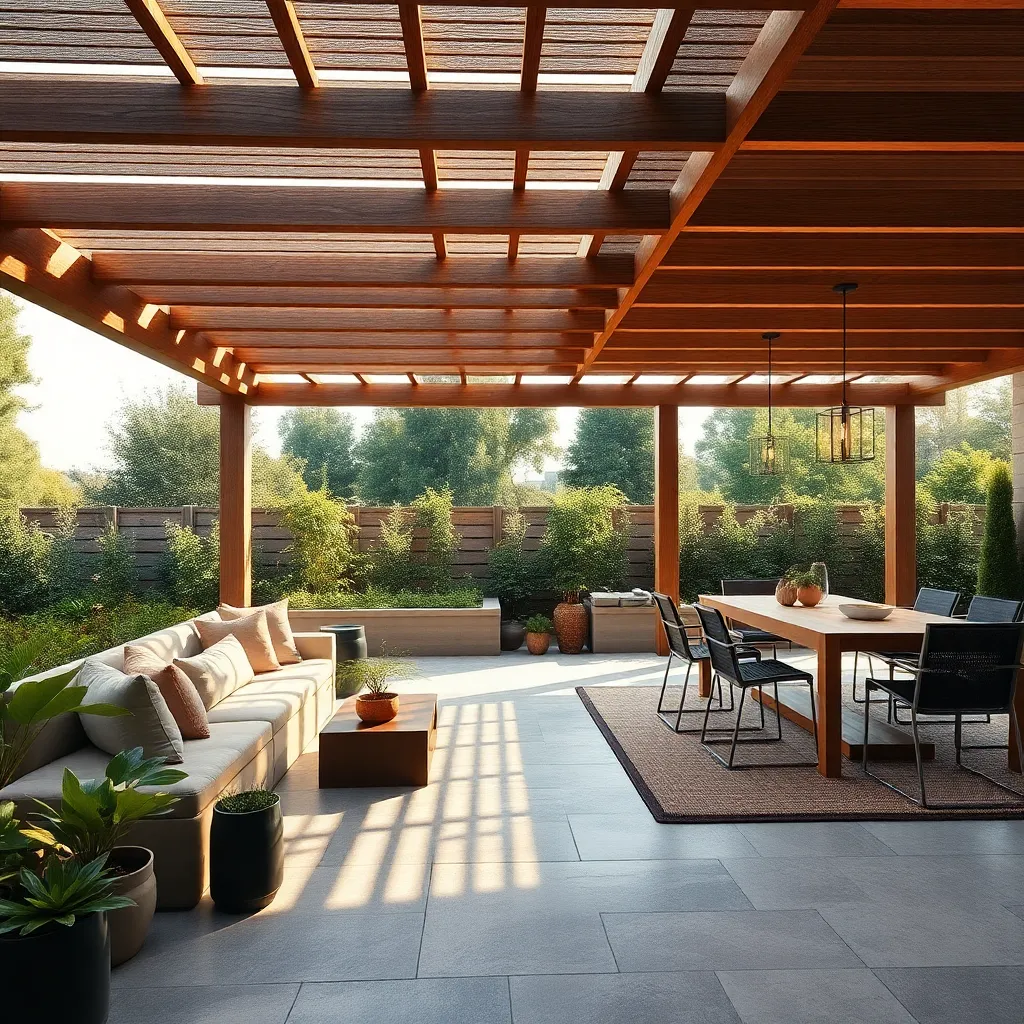
Creating seamless seating and dining areas within your pergola or gazebo enhances both comfort and functionality. To start, choose durable, weather-resistant materials like teak, aluminum, or synthetic wicker for furniture, ensuring longevity and easy maintenance. Incorporate built-in benches along the structure’s perimeter to maximize space, and consider adding cushions with removable, washable covers for added comfort and convenience.
For a polished look, define separate zones by using area rugs and lighting fixtures such as string lights or lanterns to create ambiance after sunset. When planning dimensions, allow at least 36 inches of clearance around dining tables for easy movement, and opt for modular furniture that can be rearranged depending on your gathering size. Advanced tips include integrating retractable awnings or adjustable louvers to control sunlight and rain exposure, keeping your dining experience enjoyable year-round.
Adding Greenery and Climbing Plants
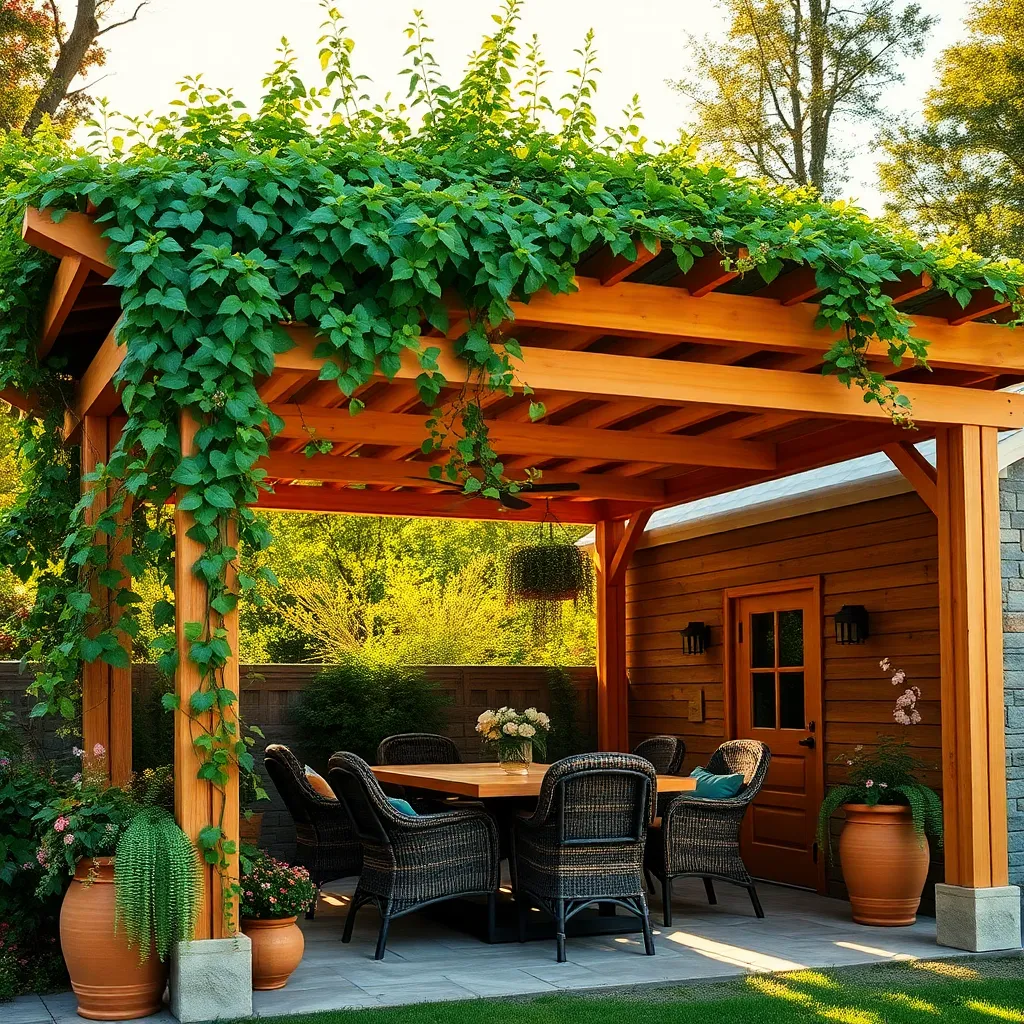
Incorporating climbing plants like wisteria, clematis, or jasmine can instantly elevate the look of your pergola or gazebo while providing natural shade and fragrance. Use sturdy materials such as wooden trellises or metal wire grids attached to the shelter’s frame to support vigorous growth and guide vines evenly across the structure. For beginners, start with fast-growing species and regularly prune to maintain shape; advanced gardeners might install an automated drip irrigation system to keep plants healthy without extra effort.
To enhance the green ambiance further, consider adding planter boxes or hanging baskets with trailing flowers or herbs around the perimeter of your outdoor shelter. Choose weather-resistant materials like cedar or composite wood for planters, ensuring they have adequate drainage holes for plant health. For a refined look, coordinate the plant colors and textures with your shelter’s design and include seasonal varieties to keep the space vibrant year-round.
Using Pergola-Gazebo Combos for Privacy
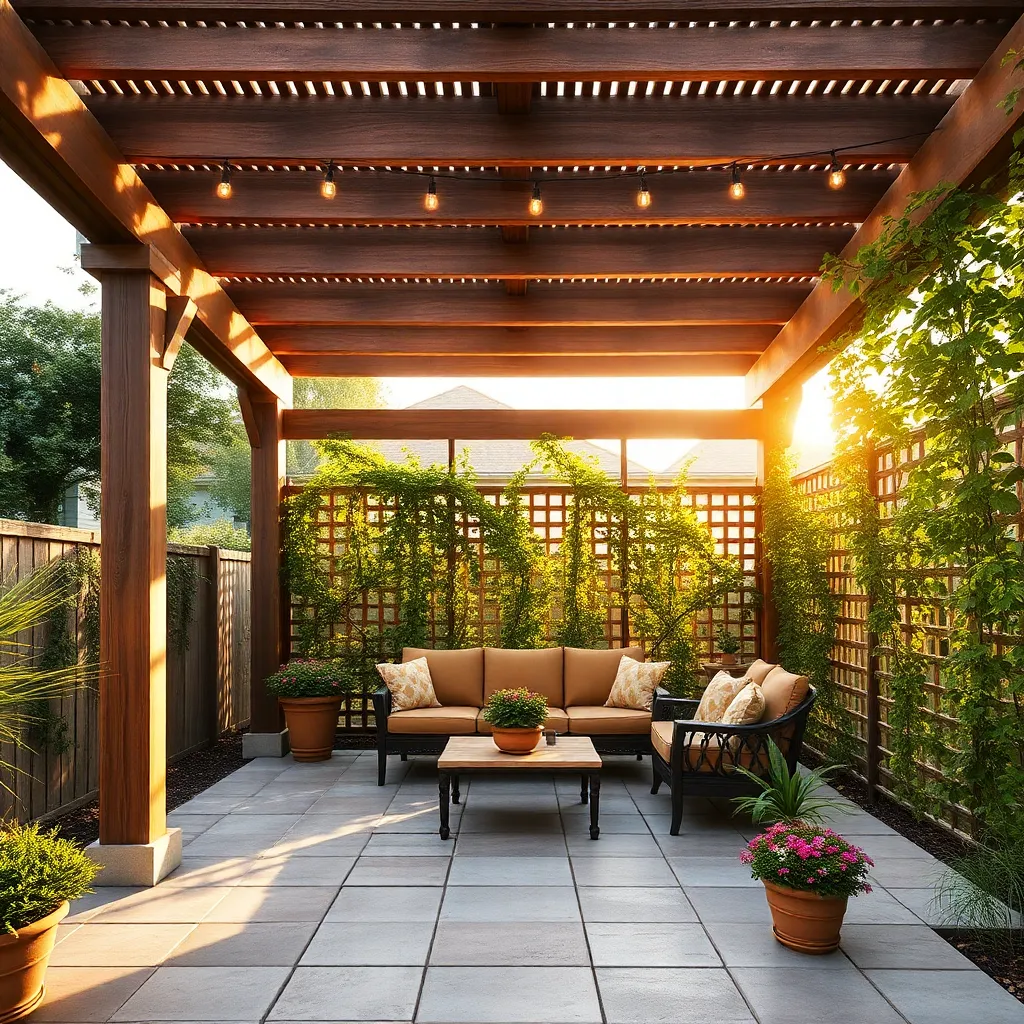
Combining a pergola and gazebo offers an excellent way to create private outdoor spaces without sacrificing style or airflow. For maximum privacy, consider installing lattice panels or retractable curtains along the sides of your structure; these can be made from weather-resistant materials like cedar or vinyl for durability. Additionally, planting tall shrubs or fast-growing climbers such as jasmine or clematis around the perimeter enhances natural seclusion while softening the overall look.
When designing your pergola-gazebo combo, pay attention to dimensions and layout to optimize privacy. A gazebo section with solid walls or screens adjacent to an open pergola allows for flexible use—closed areas for quiet retreat and open areas for socializing. For advanced customization, incorporate adjustable slatted roofs or motorized shades to control sunlight and visibility, ensuring your outdoor haven remains comfortable and secluded throughout the day.
Customizing with Built-in Features
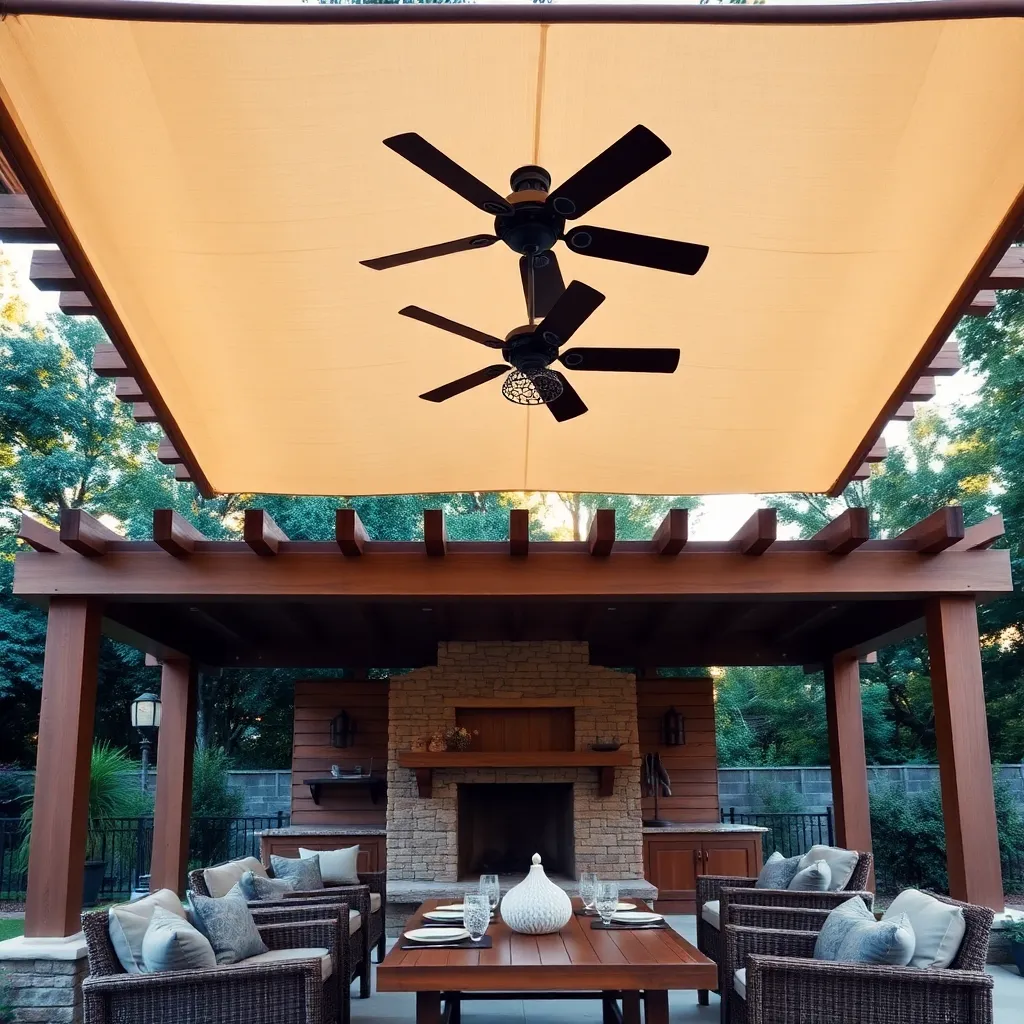
Enhance your pergola-gazebo combo by incorporating built-in seating or storage benches crafted from weather-resistant woods like cedar or teak. These features not only maximize space but also provide functional comfort; consider adding waterproof cushions for extra coziness. For advanced customization, integrate hidden compartments beneath seats to store cushions or gardening tools, keeping your outdoor area tidy and organized.
Lighting and ceiling fans are excellent built-in additions that boost usability and ambiance in these shelters. Opt for solar-powered LED lights recessed into pergola beams for energy efficiency, while installing a damp-rated ceiling fan can improve air circulation during warm months. When planning installation, ensure wiring is safely concealed and use weatherproof materials to extend the lifespan of your fixtures.
Maintaining Your Pergola and Gazebo Combo
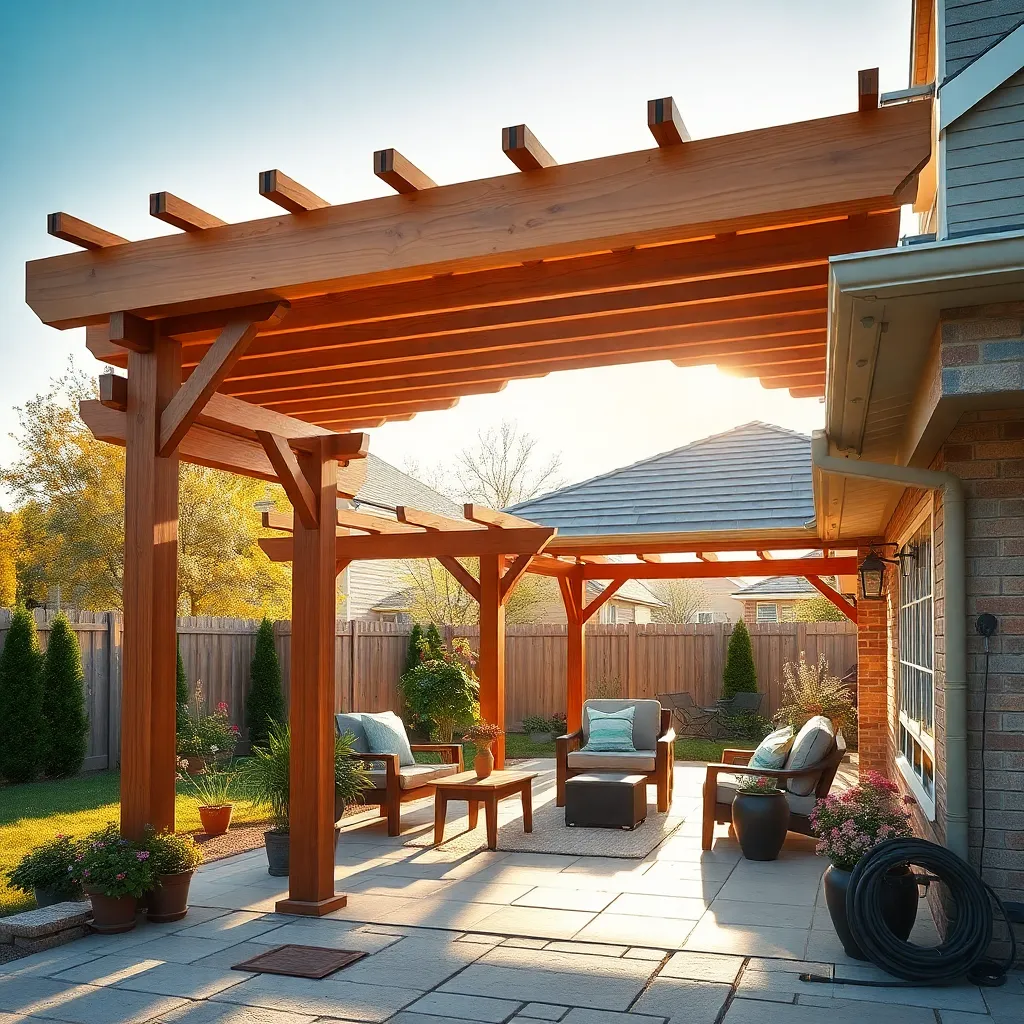
Maintaining your pergola and gazebo combo starts with regular inspections of the structure, especially focusing on joints and fasteners where wear is most common. Use weather-resistant materials like treated wood or powder-coated aluminum to minimize damage, and apply a sealant or protective finish annually to preserve the integrity of wooden elements. For added durability, ensure gutters or drainage channels are clear to prevent water pooling around the base, which can lead to rot or rust.
To keep your combo looking fresh and functional, clean surfaces seasonally with a mild detergent and soft brush, avoiding harsh chemicals that can degrade finishes. For advanced care, consider installing removable or retractable fabric covers on your pergola to protect from UV rays and rain, extending the life of both the structure and any outdoor furnishings underneath. Regularly trim surrounding plants to avoid moisture buildup and debris accumulation, which can accelerate wear and invite pests.
Budgeting for Your Outdoor Structure Project
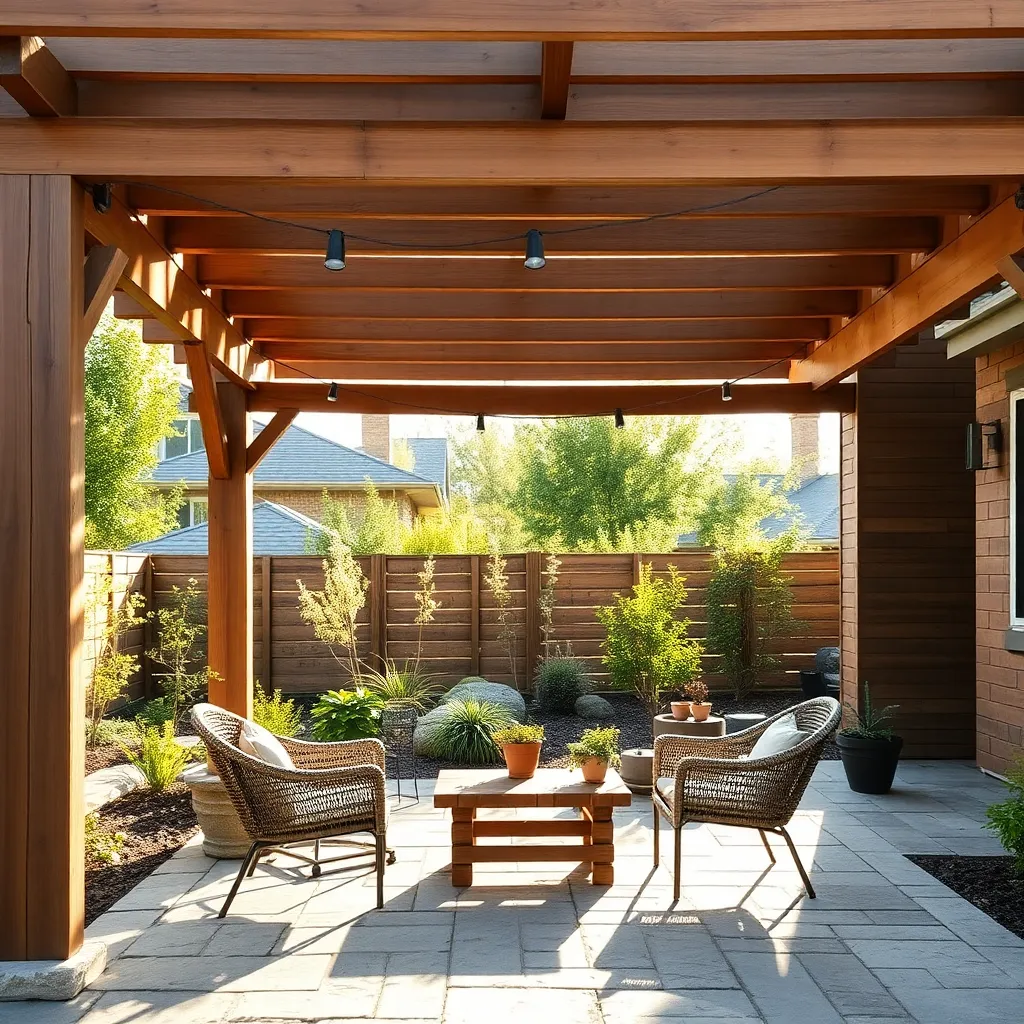
When budgeting for your pergola and gazebo combination, start by prioritizing quality materials that offer durability without breaking the bank. For example, pressure-treated wood provides a classic look and good longevity at a reasonable cost, while aluminum or vinyl options require less maintenance and can save money over time. Don’t forget to factor in essential design elements like roofing style—whether a solid canopy or open slats—which can significantly impact both price and functionality.
To maximize your budget, consider phasing construction in manageable steps and doing some of the labor yourself, such as staining or assembling prefabricated parts. Advanced tips include choosing modular designs that allow easy expansion or upgrades, and selecting standard sizes (around 10×10 feet) to reduce custom fabrication costs. Additionally, always set aside about 10-15% of your budget for unexpected expenses to ensure your outdoor structure project stays on track without surprise delays.
Inspiring Examples of Stunning Combinations
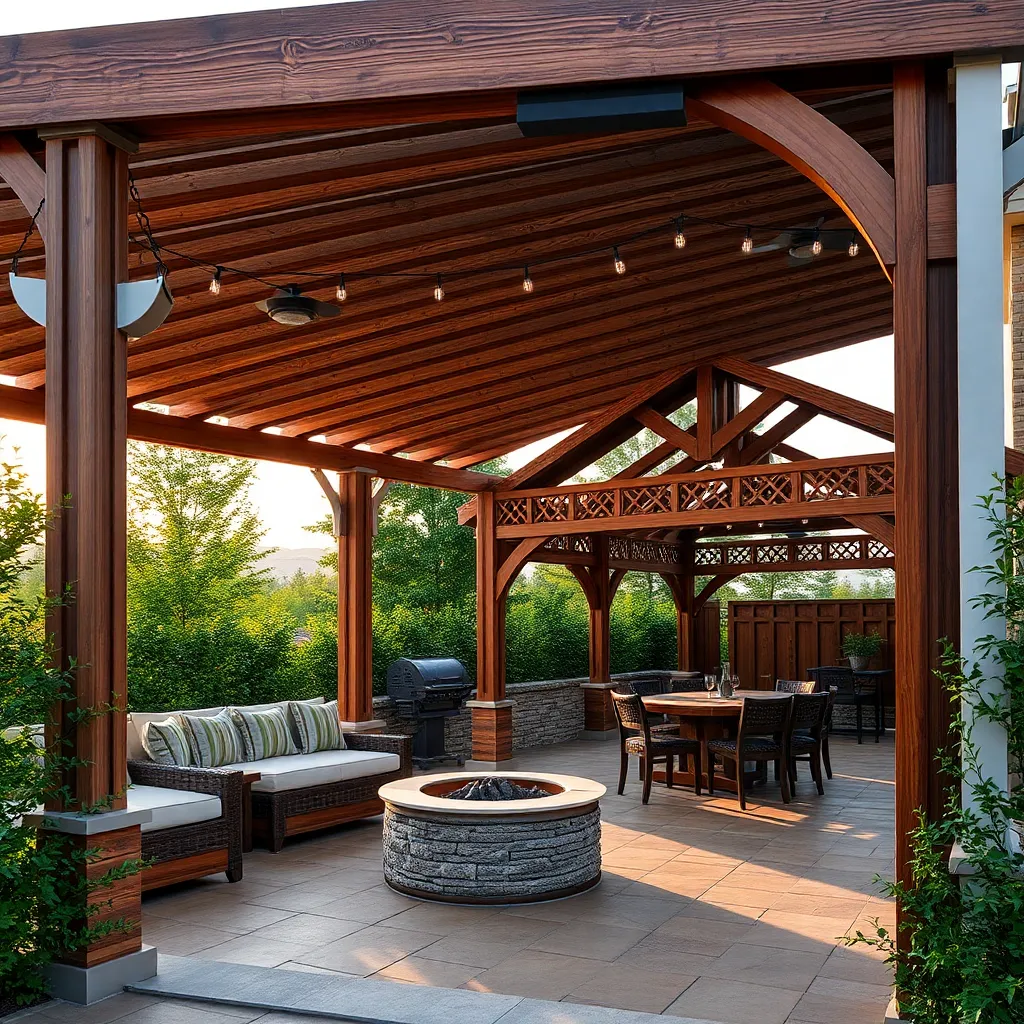
One inspiring combination pairs a classic wooden pergola with a metal gazebo to blend rustic charm and modern durability. Use weather-resistant cedar or redwood for the pergola’s frame to ensure longevity, while selecting a powder-coated steel gazebo roof for low maintenance. For an inviting atmosphere, incorporate climbing plants like wisteria on the pergola’s beams and install retractable side curtains on the gazebo for flexible shade and privacy.
Another stunning approach is to integrate a freestanding gazebo adjacent to a pergola-covered dining area, creating distinct zones for relaxation and entertaining. Opt for dimensions around 12×12 feet for the gazebo and 10×15 feet for the pergola to balance space without overcrowding. Advanced tips include adding built-in seating or planter boxes on the pergola, and using LED lighting under both structures to extend usability into the evening hours.
Conclusion: Creating Beautiful Outdoor Spaces
In exploring the 13 stunning pergola and gazebo combinations, we’ve uncovered powerful relationship concepts—from creating shared spaces that nurture connection to embracing balance between openness and privacy, fostering trust, and encouraging playful moments together. Each design reminds us that intentional environments can inspire deeper communication, collaboration, and joy in our partnerships.
Now, take a simple but meaningful step: carve out a special spot—whether indoors or outdoors—that invites you and your loved one to unwind, share, and grow closer. It doesn’t need to be grand; even a cozy corner can transform how you connect.
Be sure to save or bookmark this article so you can revisit these inspiring ideas whenever you want to refresh your relationship space and mindset. Remember, nurturing your bond is an ongoing journey, and with thoughtful effort, you’re building a future filled with love, understanding, and lasting happiness. Your relationship deserves this intentional care—start today and watch it flourish!

